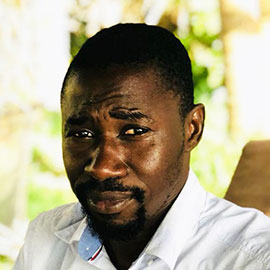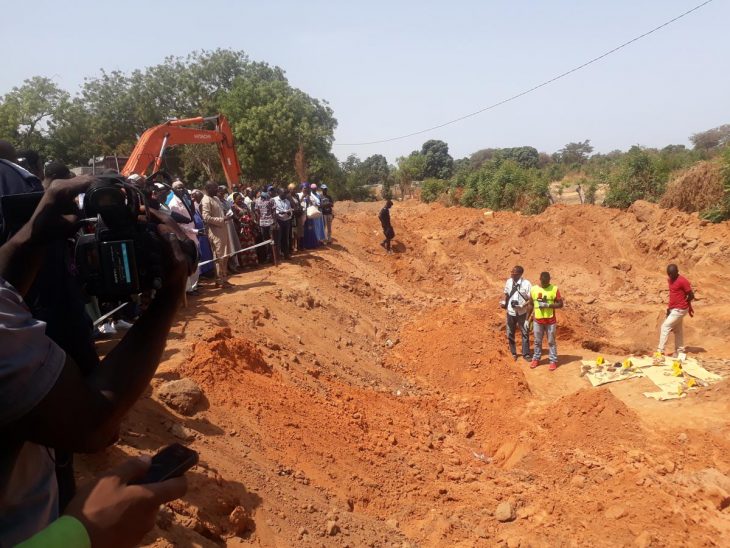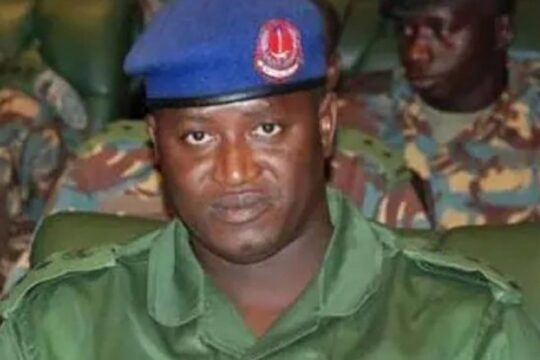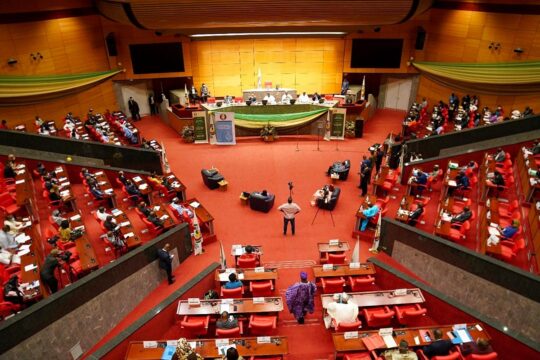Barely two weeks ago, Thomas Gomez, Gambia’s only forensic scientist, led an uncertain task. He was leading a team of investigators from the Truth, Reconciliation and Reparation Commission (TRRC) and the Gambia Police Force to attempt to exhume the remains of close to two dozen soldiers killed on November 11, 1994 for organizing a counter-coup against junta leader Yahya Jammeh.
An area measuring 70 m2 was initially identified by various witnesses as the site of the potential mass graves in Yundum Barracks, the country’s biggest military encampment over an hour drive from Banjul. A week of digging, however, revealed nothing.
The team was relying on testimonies and guidance of soldiers, some of whom were not believed to be very truthful to the Commission. Everyone began to despair. But Gomez had earlier told journalists that he and his team were prepared to excavate the whole area measuring about 180 m2. He also knew that when it comes to locating mass graves, eye-witnesses accounts are not “always accurate”.
And on Monday, April 15, the investigators ran on luck. What is believed to be the remains of seven bodies were found.
Grief and relief
The following day families of the disappeared soldiers accompanied the investigators and the 11 commissioners of the Truth Commission to the site of the mass grave. The Commission’s lead counsel Essa Faal had prepared them that what they would see will not resemble the relatives they got to know. Waiting to be shown to them were bare bones including seven skulls. For many wives, brothers, parents and sisters of the victims, it was a moment too emotional to fight back tears.
But it was also a moment of relief. “We have never thought a day like this will come. We are glad that finally justice is being served,” said Mamudou Sillah, the brother of Cadet Amadou Sillah, one of the victims of November 11. For more than two decades, victims’ families did not only have to deal with the grief of losing loved ones, they could not openly talk about their pain. The military regime had already denounced the soldiers as coup plotters and claimed they died in a shootout. No one could challenge the narrative nor were families given the opportunity to pay their last respect. The military unilaterally decided to bury them in an unmarked mass grave in the premises of the barracks.
“We have cried for over 20 years and we could not even have a platform to express ourselves,” said Fatou Sowe, wife of Sgt Fafa Nyang, one of the killed soldiers. “After the death of Gibril Saye it took me nine years to get married again. To me it was like he did not die but today I can rest knowing he was killed,” added Mbaya Demba, wife of late Lt. Gibril Saye. “It has been a relief for us, we are grateful for the work TRRC did,” further said Fatou Manneh, sister of Bakary Manneh, nicknamed Nyancho, who was 26 when he was executed.
Waiting for DNA proof
Part of the mandate of Gambia’s Truth Commission is to investigate and make known the fate of the disappeared. The Commission is facing the challenge of meeting people’s expectations while working with limited capacity.
Gomez said that there are two more potential mass graves to dig at the same location. Investigators are expecting to find more bodies. The chair of the Commission Lamin Sise assured families that they will do everything to get more results. “If anybody doubts whether or not people were killed, that they were buried in mass graves, here is your evidence,” claimed Sise, pointing to the skeletons in the grave.
At this point, the remains have not yet been subject to DNA tests. However, there seem to be early indications that the remains are indeed the killed soldiers. The evidence is consistent with the information revealed before the Commission. For instance, testimonies alleged that the victims had their hands tied and that they were reportedly half-naked when they were killed and buried. In the grave, investigators found seven electric wires and seven worn-out underwear. “This could attest to the fact that they were almost half-naked when they were being buried,” said Gomez. The skulls were pointing at different directions, suggesting that they were dumped inside. This was also consistent with narratives before the Commission. Investigators also found a ring in the mass grave though it is not clear who may have been wearing it. No bullet was found so far.
DNA testing will now help to confirm the identities of the bodies found.
REMEMBERING SOLO SANDENG
On April 14, Gambians commemorated opposition activist Ebrima Solo Sandeng who died in state custody following his arrest by state operatives during a protest in 2016. Sandeng’s death is generally seen in Gambia as the trigger of the revolution that eventually toppled former president Yahya Jammeh.
Reportage at the commemorations of April 14
This video features, among other things, an interview with renowned human rights lawyer Reed Brody.
On April 14, 2016, Sandeng led a small team of opposition activists, mainly members of the United Democratic Party (UDP), on the streets demanding “proper electoral reform”. Paramilitary officers arrested him alongside a dozen others. They were later taken to the National Intelligence Agency (NIA) where Sandeng died.
Two days later, UDP’s leader Ousainou Darboe took to the street demanding Solo Sandeng’s body dead or alive. He was arrested, tried and sentenced to a three-year jail term. Ever since, his party has maintained that Sandeng and his colleagues were mercilessly tortured by state operatives resulting in Sandeng’s death. According to the authorities at the time, the opposition activist died of shock and respiratory failure while in prison. Following Jammeh’s electoral defeat on December 1, 2016, and his fleeing into exile a month later, 8 top officials of the NIA have been charged for the alleged murder of Sandeng. Over thirty witnesses have been called to date, the prosecution case is coming to an end and the defense prepares for its response.
This year’s commemoration was led by UDP in the form of a procession and a “memorial lecture” on how Gambia could strengthen its young democracy that Sandeng and others died for.






